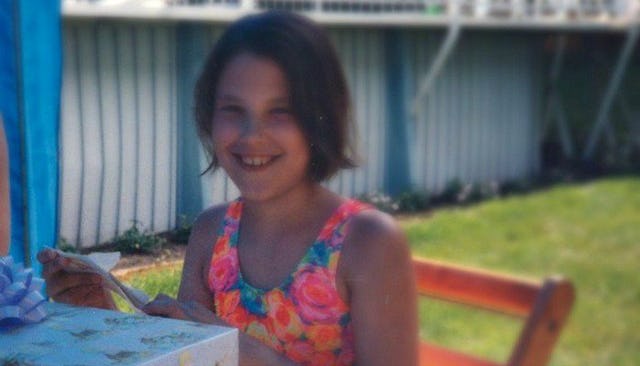The Suicide Rate For LGBT Teens Is Still Too Damn High

I leaned against the countertop, staring at the bottle of Tylenol next to me. The refrigerator hummed against the backdrop of silence in the kitchen and the rest of the house. I had just finished an hour of lying on the living room floor, crying quietly at first and then dramatically, a display of pain for no one but me. I wrote in my journal, page after page, about that pain and about what my parents should do with my things once I was dead.
I stared at the bottle of Tylenol again and wondered how many I would need to take. At 14, I had no idea about what kinds of drugs did what to a body, and no clear knowledge that acetaminophen would not cause a quick death, even if I ingested enough to overdose. At best, I would become ill, and if left untreated for several days, die of liver toxicity. But my parents were due home in a few hours, so Tylenol was probably the poorest of suicide tools.
In that moment, those things did not matter. Deep down, I did not want to die. But the idea of living, continuing to exist with the same levels of shame and guilt and anxiety that lived in my body, seemed virtually impossible.
I have trouble accessing the place where that pain existed. Now, at 31, I am not ashamed to be gay, and I am not afraid of the consequences of loving and living in truth. I am married to the love of my life — a woman — and we have the life I never thought possible. Today when I encounter deep emotional pain, I sit squarely in the middle of it and know that it is not strong enough to take me down. I have tools, and maturity, and so much more knowledge.
I want very much to reach back across time and space and tell that miserable girl that everything will be all right. I want to tell her that she will stand up one day after many, many days of tears, stop lying, and find the other side where truth and light exist — where, even though hate and pain will still arise, it will never be from the people you love.
But at 14, I did not have those abilities. Instead, I had a complicated undertow of grief for the loss of a person I desperately wanted to be: a person who did not have feelings of deep love for their best friend — a girl — but instead a person who felt something for the sweet boy who tried to hold her hand in the back room during her grocery store shift. A person who looked like the rest of the people in the world. Someone normal.
I look back and try to peel away the layers of my life, investigating to determine how and why I felt so caged and hopeless. Why, despite having an openly gay aunt and incredibly loving parents who had never even grounded me let alone hinted they were capable of disowning my existence, I felt the revelation of my sexuality would cause a cosmic and irrevocable shift in my life that would ruin everything.
I still don’t know why. I know that I felt different, and that difference cracked my heart in two.
Earlier this week, the CDC released the 2015 results of their first-ever national study on lesbian and gay-identified high school students in America, comparing over 100 health behaviors against straight students. The results are devastating. According to their report, “more than 40% of LGB students have seriously considered suicide, and 29% reported having attempted suicide during the past 12 months.” That is two out of every five students who reported having suicidal thoughts, and almost one-third had actually attempted to end their own lives. Sixty percent said they felt so sad or hopeless that it interfered with their daily activities. And twice as many LGB youth reported being bullied online and in school as their straight counterparts.
These are LGB youth living and breathing in a world where they can get legally married the day they turn 18 to someone of the same sex. Living and breathing in a world where their country and most of the developed world have recognized the legitimacy of gay and lesbian citizens to create loving and legal families.
But these numbers, like so many other daily events, are the reason that it is not enough. Yes, we can get married, but the young people in our community still often feel that ending their own lives is preferable to growing up and getting that chance. And for the people of color and transgender and gender-nonconforming members of our community, there is violence and hate and suffering every single day. These numbers are just one of a barrage of reminders that marriage is not even close to enough.
To all my straight friends: Talk to the children in your life about love. Talk to them not just in the context of other kids’ mommies and daddies but in the context of your relationship with your spouse and what other relationships and paths might look like. Talk about it early, and often, and make sure your kid knows every single day that there is nothing to be ashamed about the way they feel inside.
To my queer, white married friends: We can’t be complacent. There is so much more work to do.